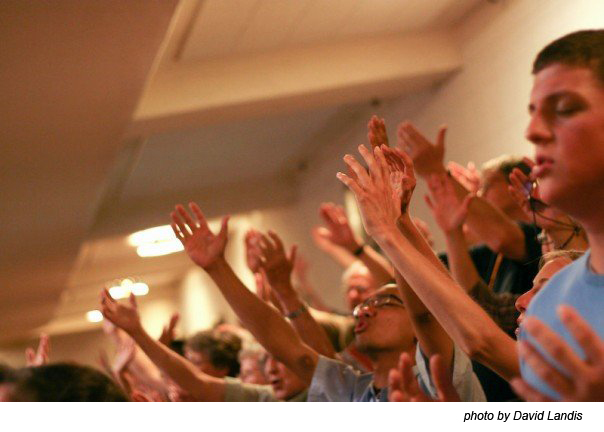Daniel Landes, Doylestown
daniel.landes@emu.edu
The Mennonite church is dying.
Or should I say, my Mennonite church is dying. I don’t mean my specific congregation but the Mennonite church that I have known all my life. The same church in which I was raised as a child, baptized, and welcomed into as a member, is facing certain extinction, and yet that gives me hope for the future of Mennonites in this country.
I didn’t come to this conclusion in a week, but my trip as a delegate to San Jose for the Mennonite Church USA Convention opened my eyes to this reality. When Mennonites from all over the country gathered for a week of business, worship, and seminars, the signs of extinction were clear.
The church that I believe will die is a Mennonite church that refuses to let go of 300 years of tradition. This church was in clear view in San Jose, but at the same time I witnessed another church in San Jose that has given me hope for the future. Both churches were evident when the 2006 Mennonite Member Profile was presented in a delegate session. Seventy percent of Mennonites in the United States are over the age of 45. This is in contrast with a survey in 1972 when only 46% of us were over the age of 45. The end result of this trend is a church that literally dies out, but I don’t think that is the future.
Another part of this profile was a look at a sample of Racial/Ethnic congregations. The results from these congregations present anything but a dying church, either physically or spiritually. During the past five years, around a quarter of new members who have joined the church have fit into the Racial/Ethnic category. These churches and their members are more likely to be evangelically minded and less tied down to their local communities.
This became clear when I had the opportunity near the end of my week in San Jose to meet with some young adults from Franconia Mennonite Conference. This included some members of the Philadelphia Praise Center, a multi-racial congregation and Franconia Conference’s newest member congregation. In conversation with these young adults I saw hope for the future of the Mennonite church. Here were Mennonites who were truly focused on the reign of God with none of the apathy that seems to weigh many of our congregations down. I also found this passion for a Mennonite church that looks different in other ways at the Convention. In worship we sang songs in many languages and in many styles. Speakers challenged us to combine the strengths of our Mennonite heritage – such as our peace witness – with a desire to live and share the love of Jesus.
I ultimately left San Jose wondering: how can this aging church I know, tied down from centuries of being separated from society and maintaining uniformity in theology and practice, survive?
I went to the convention as a delegate and enjoyed participating in the sessions, but what I will remember from my time in San Jose was meeting the members from Philadelphia Praise Center. The church will not become extinct if we can learn from churches such as Philadelphia Praise Center. The problem is that we must leave behind much of what it means to be a Mennonite if we want to follow their example. Are we ready to let the church mired in tradition die and embrace a Mennonite church that will live the call?

The opinions expressed in articles posted on Mosaic’s website are those of the author and may not reflect the official policy of Mosaic Conference. Mosaic is a large conference, crossing ethnicities, geographies, generations, theologies, and politics. Each person can only speak for themselves; no one can represent “the conference.” May God give us the grace to hear what the Spirit is speaking to us through people with whom we disagree and the humility and courage to love one another even when those disagreements can’t be bridged.
